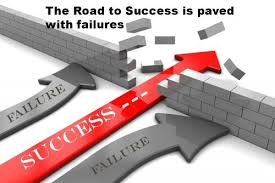Getting Ready to Change Starts with the Decision to do so
- February 29, 2016
- blog, Change, Success
- 0 Comments
Dear readers, it’s time for some tough love. It’s the second month of the new year, and no doubt many of you have big plans for how you want this year to be different. This is the year you’re going to achieve new success, reach your financial goals and grow your business by x percent. Fantastic, I love the positivity and determination.
But, are you actually doing anything about it?
In the past year of coaching business owners, I’ve noticed an alarmingly common pattern. Clients come to me full of ideas and talk about how they want to achieve x, y and z. Yet, when it comes time to commit to attending coaching calls or personal development events and to putting new ideas and approaches into practice, there is resistance. “I don’t have time to make the webinar this month,” they say. “But we’ve always managed things this way,” comes the reply to an alternative suggestion.
Keep doing  what you’ve always done, and you’ll keep getting the same results
what you’ve always done, and you’ll keep getting the same results
Sorry guys, but success isn’t going to magically land in your lap. If you want to get different results, you need to be prepared to change your approach and try new ways of doing things. Ultimately, change is a choice. You need to decide to change direction or change what you are doing. You need to be willing to push through any barriers and discomfort that might be in your way.
Because ultimately, change is inevitable, whether you actively seek and embrace it or not. Your business is not operating in a vacuum. Competitors are constantly progressing and threatening your territory. Technology advances and enables new ways of doing things that you hadn’t imagined just a short time ago. By doing things the same way, at best your business will get the same results and stagnate; at worst, you will become irrelevant and eventually obsolete. Imagining the outcomes of not embracing change can sometimes be the motivator you need.
The three P’s of change
Instigating a change in our lives involves focusing on three key areas: the people around us and who we interact with; our psychology and the programming of our mind; and our physiology, including how we think, act and express ourselves.
- People: Seek out mentors to learn from and be open to different ways of thinking. Spend time with people who display the attributes you wish to develop in yourself, and identify successful people whose behaviour and habits you can model from.
- Psychology: Remember to take time to pause, stop and clear your mind. Focus on the right now, not the past and the future. Taking slow, deep breaths can help to bring you back to the moment, rather than worrying about what you should have done or should do later.
- Physiology: Try visualising the behaviour and results that you want to achieve, and then articulate this as positive facts in the present tense. Physically, act and move the way you would if you were achieving what you wanted.
Are you ready to stop talking about making changes and start making them? With our Business for Life coaching program, we’re ready to help you beyond talking and into action. Call Bx on 1300 068 229 or find out about our Business for Life Program.





 g the buddy serve a customer, then serving the next customer under supervision. Or in an office environment, this could take the shape of shadowing the buddy on a customer call.
g the buddy serve a customer, then serving the next customer under supervision. Or in an office environment, this could take the shape of shadowing the buddy on a customer call.
